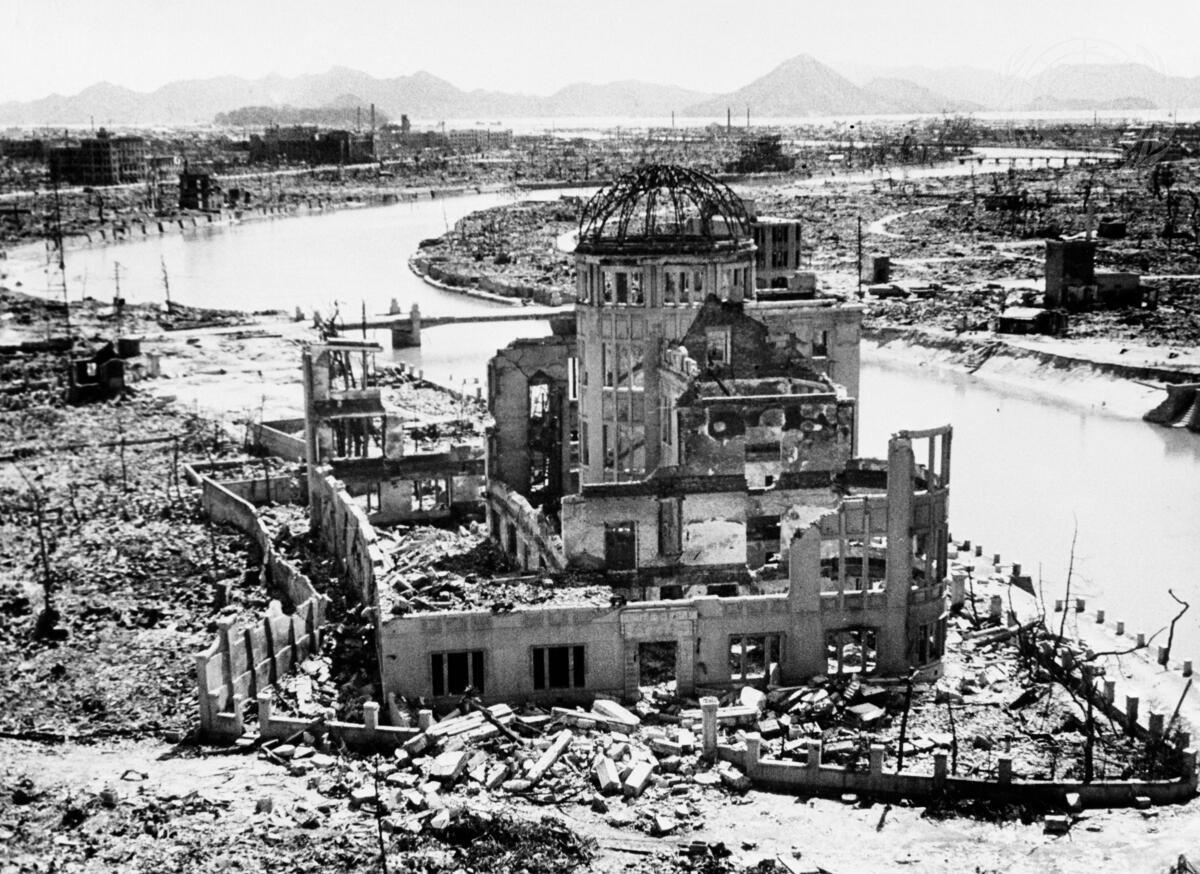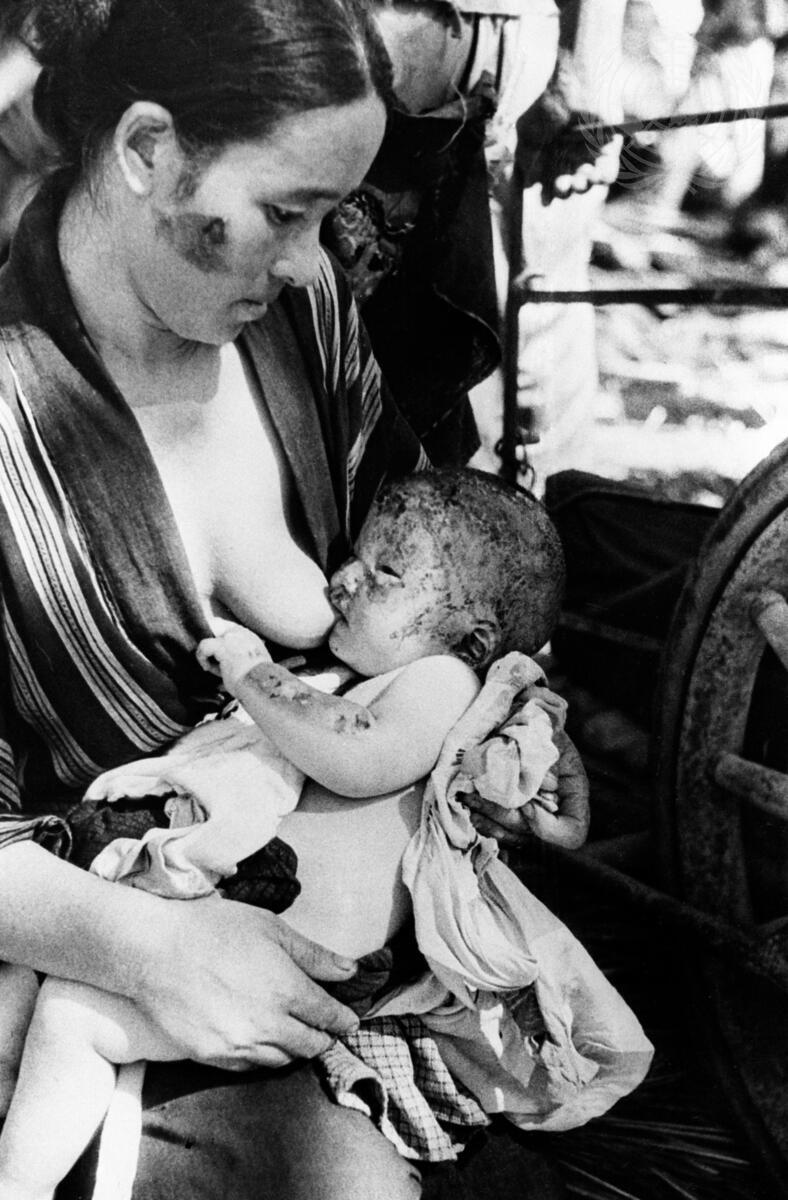“The only way to eliminate the threat of nuclear weapons is to eliminate them altogether,” said Secretary-General António Guterres upon the awarding of the Nobel Peace Prize 2024 to the grassroots organization Nihon Hidankyo.
The first atomic bomb ever to target a populated area was launched over Hiroshima, Japan, by the United States on 6 August 1945. A second bomb targeted Nagasaki two days later. The two atomic bombs killed approximately 120 000 people. A similar number died later of burn and radiation injuries. It is estimated that 650 000 people survived the attacks. These survivors are known as Hibakusha in Japanese. The fate of the survivors was long ignored. The Hibakusha, the survivors of Hiroshima and Nagasaki, have worked tirelessly to raise awareness of the catastrophic impacts of nuclear weapons and push for their total elimination. Achieving global nuclear disarmament is the highest disarmament priority of the United Nations. It was the subject of the General Assembly’s first resolution in 1946, and has been at the forefront of many major diplomatic efforts to advance nuclear disarmament since. However, still today around 12,100 nuclear weapons remain.
On 11 October 2024 it was announced that Nihon Hidankyo, the largest and most widely representative Hibakusha organisation in Japan founded in 1956, is awarded the Nobel Peace Prize 2024 “for its efforts to achieve a world free of nuclear weapons and for demonstrating through witness testimony that nuclear weapons must never be used again”.
This photo story shows the horrific aftermath in Hiroshima and Nagasaki in 1945 and the commitment of the United Nations for total elimination of nuclear weapons.


At left: An ominous mushroom cloud rose thousands of feet into the air blotting out the sun and showering deadly ash and radioactive debris on what remained of the town and people of Hiroshima, Japan. Atomic cloud bursting over Hiroshima, 2 minutes after the explosion, at 8:17AM on 6 August 1945.
Photo # UN7770263
UN Photo/Mitsuo Matsushige
At right: Smouldering ruins of Hiroshima, about 450 meters from the hypocenter.
Photo # UN7757911
UN Photo/Mitsugu Kishida

The remains of the Prefectural Industry Promotion Building in Hiroshima on 1 September 1945, later preserved as a monument.
Photo # UN7757913
UN Photo/DB


At left: Thermic rays imprint the shadow of a handle on a gasometer about 2 kilometers from the hypocenter at Hiroshima.
Photo # UN7758051
UN Photo/Shunkichi Kikuchi
At right: The ruins of Nagasaki near the hypocenter or ground zero on 10 August 1945, the day after the atomic bomb fell on that city.
Photo # UN7757920
UN Photo/Yosuke Yamahata


At left: Injured civilians, having escaped the raging inferno, gathered on a pavement west of Miyuki-bashi, Hiroshima, about 11.00 am on 6 August 1945.
Photo # UN7757915
UN Photo/Yoshito Matsushige
At right: Nagasaki victims the day after the bomb fell [10 August 1945].
Photo # UN7757919
UN Photo/Yosuke Yamahata


At left: Survivors of the Hiroshima bomb who have received some medical care.
Photo # UN7758049
UN Photo/Hajime Miyatake
At right: Mother and child struggle to go on living about 2.30 p.m. in Nagasaki on 10 August 1945.
Photo # UN7757914
UN Photo/Yosuke Yamahata


At left: "Sennin-zuka" - "one thousand souls" - a simple memorial to those who escaped immediate death but died and were cremated on Ninoshima Isle, near Hiroshima. Their ashes were later removed to the Peace Memorial Park in Hiroshima. [17 October 1945]
Photo # UN7758050
UN Photo/Shunkichi Kikuchi
At right: The Hiroshima explosion recorded at 8.15 a.m. 6 August 1945 on the remains of a wrist watch found in the ruins. Photo taken on 6 August 1945.
Photo # UN7757916
UN Photo/Yuichiro Sasaki

Secretary-General António Guterres visited the Peace Memorial Museum in Hiroshima during his trip to Japan in August 2022, reiterating his call on world leaders to urgently eliminate stockpiles of nuclear weapons. Display of the clothes of victims of the nuclear bombing in Hiroshima and Nagasaki in 1945.
Photo # UN7946271
UN Photo/Ichiro Mae


At left: Fujimori Toshiki, Assistant Secretary General of Nihon Hidankyo, addresses the United Nations conference to negotiate a legally-binding instrument to prohibit nuclear weapons, leading towards their total elimination. [27 March 2017]
Photo # UN7144493
UN Photo/Rick Bajornas
At right: A Hibakusha, one of the survivors of the atomic bombings in Hiroshima and Nagasaki, speaks at a special event co-organized by the Government of Japan, the Department of Public Information (DPI), and the UN Office for Disarmament Affairs (UNODA), commemorating Disarmament Week (annually 24-30 October). The winners of a “Poetry for Peace” contest, in which Hibakusha testimonies were used as inspiration, were announced during the event. [25 October 2011]
Photo # UN7345722
UN Photo/Paulo Filgueiras



At left: Participants of the annual Hiroshima Peace Memorial Ceremony, in Hiroshima, Japan, mourn and pray in memory of victims of the 1945 atomic bomb. [6 August 2010]
Photo # UN7395416
UN Photo/Eskinder Debebe
Upper right: Secretary-General Ban Ki-moon (front, left) meets atomic bomb survivor Akihiro Takahashi in Hiroshima, Japan. [6 August 2010]
Photo # UN7395419
UN Photo/Eskinder Debebe
Lower right: Secretary-General António Guterres (seated) makes paper orizuru, or paper cranes (a design considered the most classic of all Japanese origami), with school children at the Nagasaki Atomic Bomb Museum, during his visit in Nagasaki, Japan. [9 August 2018]
Photo # UN792064
UN Photo/Daniel Powell

Secretary-General António Guterres pays homage to the victims of the atomic bombs during a ceremony at the Peace Memorial Museum in Hiroshima during his trip to Japan reiterating his call on world leaders to urgently eliminate stockpiles of nuclear weapons.
Photo # UN7946263
UN Photo/Ichiro Mae
